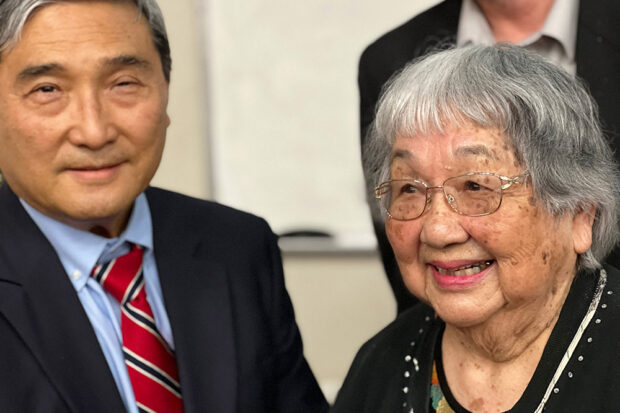
On April 24, about 90 people filled the Forum Hall Auditorium at Fresno City College to listen to Dale Ikeda and Marion Masada talk about the Japanese incarceration during World War II.
From 1942 to 1945, more than 120,000 people of Japanese origin were placed in concentration camps distributed in several U.S. states. “Seventy percent of them were U.S. citizens,” said Dale Ikeda, a retired judge whose parents were incarcerated.
The attack on Pearl Harbor on Dec. 7, 1941, by Japan helped to generate public suspicion of local Japanese collaboration with the attackers. However, there was never any proof of such suspicions.
On Feb. 19, 1942, President Roosevelt signed Executive Order 9066, giving the military the authority it needed to remove individuals of Japanese descent from the Pacific Coast and to place them in concentration camps.
“Many Japanese people don’t like to talk about this experience; they feel ashamed for being incarcerated,” said Ikeda.

“Now there is a concern about immigrants. There is a political candidate that promises to round up many of them in concentration camps.” He called on young people to be alert and aware of these threats.
Although Pearl Harbor created the “atmosphere” for the incarceration of the Japanese, Americans had previously targeted Asian immigrants. In 1882, the United States passed the Chinese Exclusion Act, prohibiting Chinese from entering the country.
Even before the signing of Executive Order 9066, several measures were imposed to limit the movement of the Japanese, such as a curfew (they couldn’t circulate between 8 p.m. and 6 a.m.) and a restriction on traveling further than five miles. Then came the arrest of Japanese local leaders until they all were incarcerated.
Some Japanese descendants wanted to enlist in the military but were first rejected. Later, they were accepted.
“The Japanese culture is very strict, there are several rules, like you can’t bring shame to your family or your society; if you do good, don’t brag about it; let the children be children,” explains Masada, who was herself incarcerated.
It’s not difficult to understand to what extent this community felt ashamed and traumatized because of the incarceration experience. Upon arrival at the camps, they were given a number, taking away their names.
“They destroyed our families’ structure; my father wasn’t the leader anymore,” said Masada. “I helped my parents, my family, so I didn’t have time to play. I didn’t have a childhood.”
But young Masada found joy in books. “I read a lot!”
She went to explain how traumatizing was the lack of privacy, particularly in the bathroom. “I started taking a shower late at night, but others thought the same!” she said, laughing.
After the war was over, the Japanese were allowed to return home, only to find that many of them had lost their properties and businesses. The Masada family couldn’t even get a place to rent.
“I lost my self-confidence. I thought that being Japanese was something bad…I overcame all this by telling my story. Now I can talk about this experience.”
The audience felt moved by the presentations of Ikeda and Masada and gave them a big, warm applause.
The Japanese Incarceration Panel was organized by the San Joaquin Media Alliance, the Community Alliance newspaper, the Pan Valley Institute of the American Friends Service Committee and Fresno City College.

